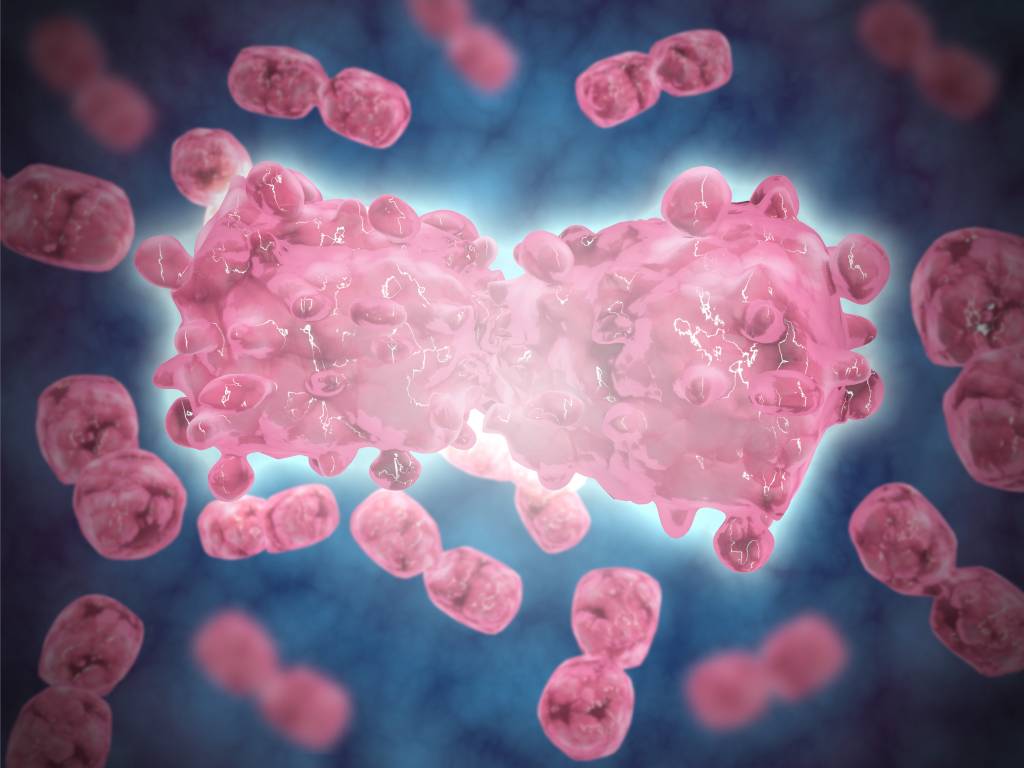Think a rash or a few bruises are no big deal? You may want to think again. Small red spots or easy bruising can be the first signs of leukemia, a type of blood cancer.
Many people initially aren’t aware they have leukemia because the symptoms seem like just a rash or the flu. However, leukemia is one of the most common types of cancer, with about 381,774 people living with, or living in remission from, leukemia in the US right now according to the Leukemia and Lymphoma Society¹. Although this cancer can be difficult to treat, survival rates continue to increase, especially if you’re aware of its signs and treatment options.
 What is Leukemia?
What is Leukemia?
Like all cancers, leukemia begins from abnormal cell growth and division. Leukemia is a type of blood cancer that primarily affects white blood cells, which help fight infections in human bodies. Leukemia can also affect red blood cells and platelets, although this is less common. Abnormal leukemia cells don’t die off in the way normal white blood cells do, so as more cancerous cells are created, they take up room for healthy cells. As this process increases, the body struggles to fight infections and function properly.
The Symptoms of Leukemia
Symptoms vary with different types and stages of leukemia. Patients often don’t have many symptoms at first or experience mild symptoms that may go unnoticed. These common symptoms can be signs of something less serious than leukemia; however, if these symptoms continue, it’s important to see a doctor. Often, symptoms of leukemia include:
- Fever
- Chills
- Frequent fatigue and weakness in the body
- Frequent infections that can become severe
- Sudden or unexpected weight loss
- Swollen lymph nodes
- Becoming more prone to bleeding or bruising
- Frequent nosebleeds
- The appearance of red spots in your skin (also known as petechiae)
- Excessive sweating, particularly at night
- Bone pain
- Tenderness
Types of Leukemia
The main ways leukemia is classified are how quickly it’s progressing and which type of white blood cell is affected. Acute leukemia is fast-growing and is characterized by a large increase in immature white blood cells. Chronic leukemia occurs when the abnormal cells are more mature and build up slowly. Chronic leukemia takes more time to become problematic, but it’s generally more difficult to treat. Lymphoid and myeloid cells are the two types of cells affected by leukemia, which is what makes the difference between lymphocytic and myelogenous leukemias.
These two types of classifications identify the four main forms of leukemia:
- Acute lymphocytic leukemia (ALL)
- Acute myelogenous leukemia (AML)
- Chronic lymphocytic leukemia (CLL)
- Chronic myelogenous leukemia (CML)
Each type of leukemia requires a different treatment plan and approach, so it’s important to know how this cancer is affecting your body and cells in order to choose or plan for the best option for you.
Causes and Risk Factors
Scientists are uncertain what exactly causes leukemia and how its different forms appear. However, there are risk factors that have been linked to leukemia. These include smoking, having down syndrome or other genetic abnormalities, family history of leukemia, previous cancer treatment, and exposure to certain chemicals (such as benzene). Leukemia is the most common cancer in children, but many adults are diagnosed with leukemia as well.
Treatment Options
Treatment options for leukemia vary depending on which form you have, as well as age, health, and stage of the leukemia. Sometimes treatments are combined or several are tried, depending on the case.
Some of the most common forms of treatment are:
- Chemotherapy: Taken in pill form or injected, chemotherapy works to kill cancerous cells through chemicals. Chemotherapy can be harmful to other cells in the body, causing many side effects, but it has shown great success in leukemia patients.
- Biological Therapy: While this treatment doesn’t directly target cancer cells, it uses living organisms to stimulate the body’s immune system to kill leukemia cells. It also can be used to help ease side effects of other treatments.
- Targeted Therapy: Specifically targets parts of the cancer cell through drugs.
- Radiation: High doses of radiation from x-rays are used to kill cancer cells.
- Stem Cell or Bone Marrow Transplant: These treatments replace existing bone marrow with healthy bone marrow from a donor or from the patient themselves. Stem cells can also help regenerate healthy, non-cancerous cells.
While these treatments are never guaranteed to work, each year new treatments are researched and new drugs are created, increasing the survival rate and the number of options available. Since 1960, the Leukemia and Lymphoma Society² reports that the 5 year survival rate of all leukemia patients has quadrupled, and hopefully will continue to increase.
If you’re worried about developing leukemia or are currently facing life with a leukemia diagnosis, it’s important to know that you have options – and those options are changing rapidly. As more is learned about this type of cancer, more treatments will become available. So, stay informed about the changing treatment options in order to work with your doctor and find the best plan for you.
Like anything, it’s always a good idea to be aware of the latest research. We recommend comparing at least 3 or 4 options before making a final decision. Doing a search online is typically the quickest, most thorough way to discover all the pros and cons you need to keep in mind.


